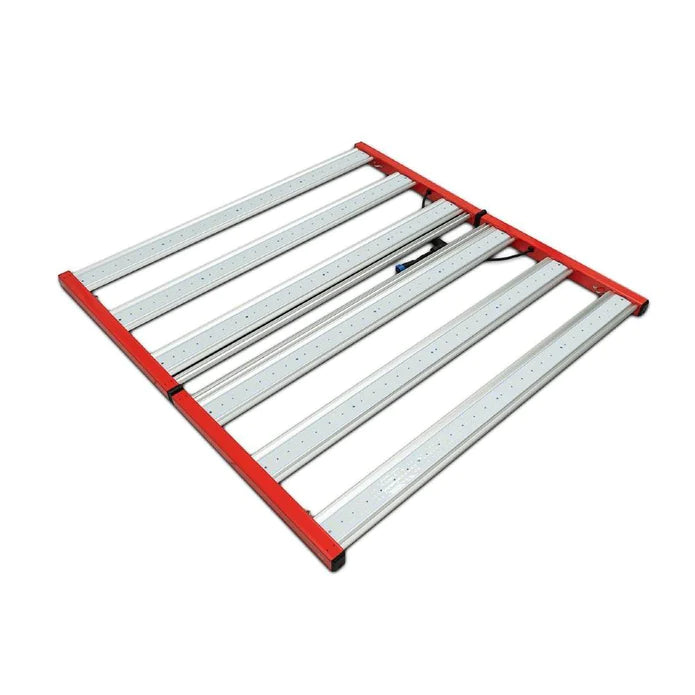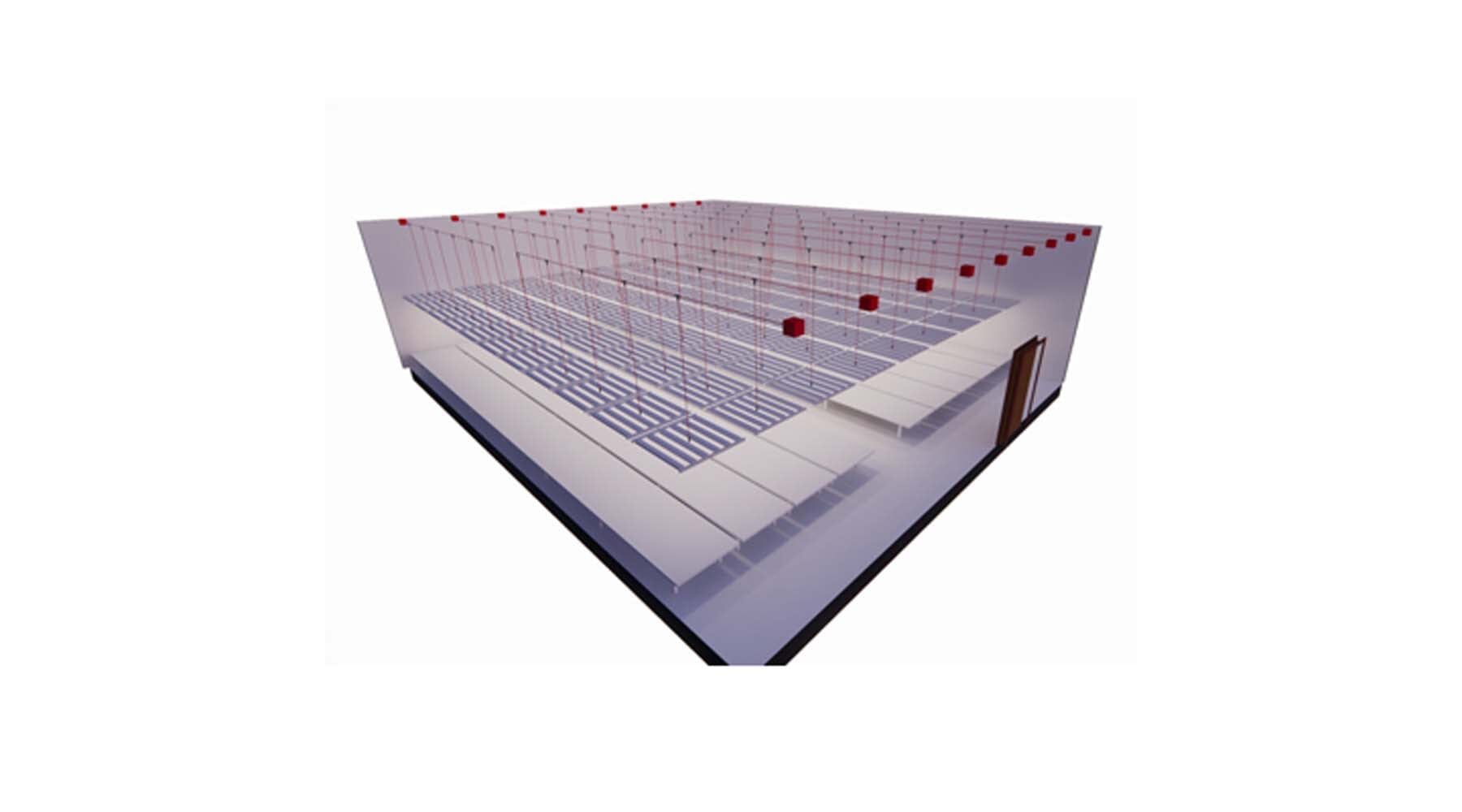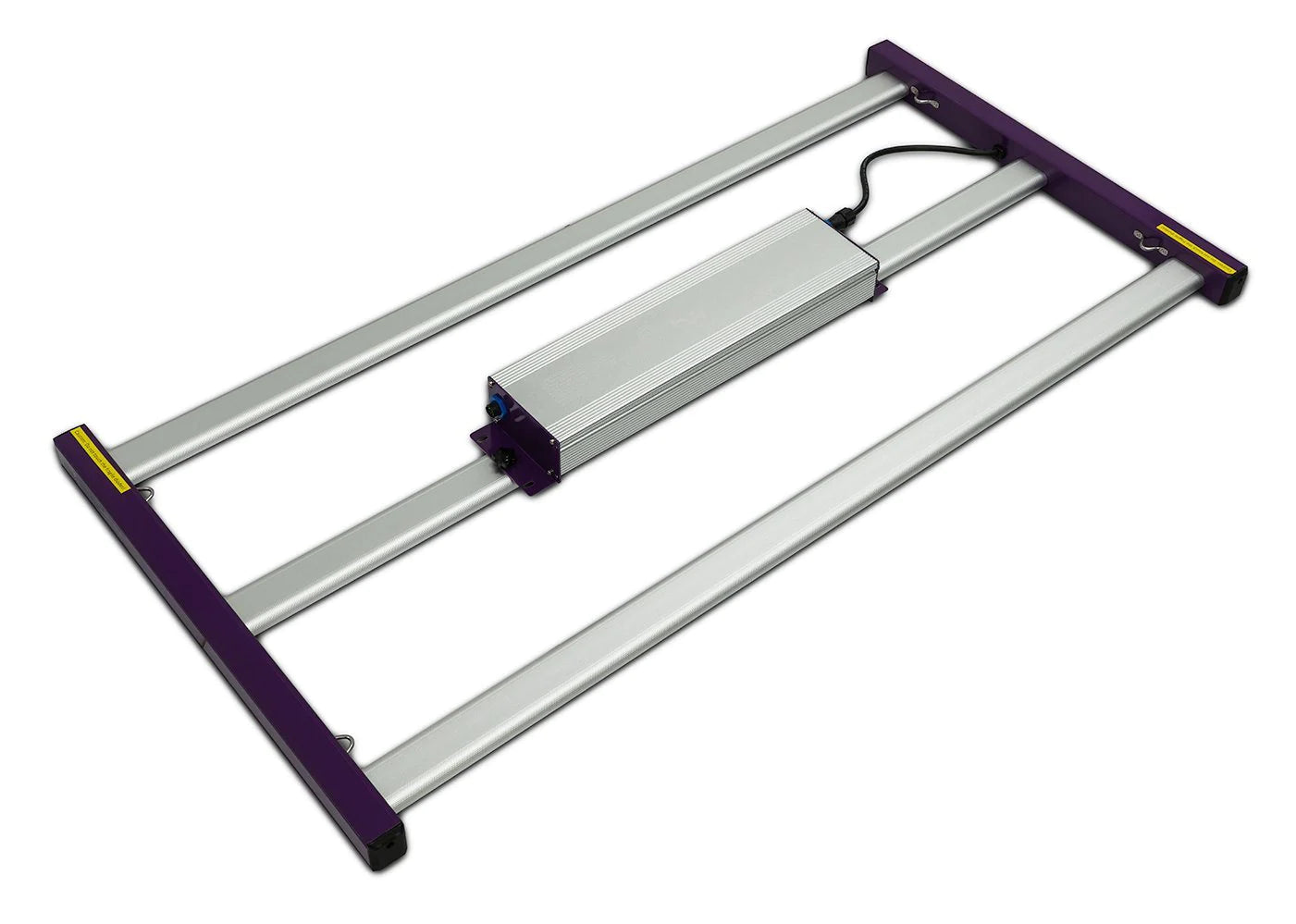
Detailed Instructions for Stainless Steel Reactor Ethanol Extraction
, by Mike Pabich, 14 min reading time

, by Mike Pabich, 14 min reading time
Detailed instructions on assembly, setup, and operating of the stainless steel reaction vessel. This guide assumes you are using the reactor for ethanol extraction.
Turnkey Setup #1 assumes that you have a separate storage container or vessel for ethanol such as a 5-gallon bucket or carboy. This setup allows you to vacuum inject ethanol into the reactor and then dump the ethanol/oil mixture into the 40L collection base. Once inside the collection base, you can then vacuum inject directly into a rotovap.
Turnkey Setup #2 allows you to use the second reactor as an ethanol storage vessel/pre-chiller. You will push the ethanol using nitrogen pressure from the first reactor into the second reactor containing botanical material. You will then dump the ethanol/oil mixture back into the first reactor where you will have the option to further dewax, or push the ethanol/oil mixture into the 40L collection base for vacuum injection into a rotovap.
Shop all Lab Equipment Turnkey Setups on BVV!
Other things you will need:
- Cryo freezer or chest freezer for chilling ethanol before injection (only for Turnkey Setup #1)
- Nitrogen Supply Tank. We recommend a Liquid Nitrogen Dewar Tank for it's capacity.
- Rotovap for recovering ethanol after extraction
- Ethanol. We recommend a gallon per pound of botanical material. You can use 190 proof grain alcohol, 200 proof ethyl-alcohol, or Isopropyl alcohol.
- Chilling Fluid
50L Double Jacketed Stainless Steel Reactor Turnkey Setup #1 includes the following components:
- 50L Double Jacketed Stainless Steel Reactor
- Welch 2.3 cfm High Capacity 4-Head Oil-Free Diaphragm Chemical vacuum Pump
- Polyscience 45 Liter Advanced Digital Refrigerated Circulator (-25C/135C)
- 40L Stainless Steel Reactor Collection Base
- 20ft of 1/4" Vacuum Tubing
- 20ft of 1/2" Silicone Tubing
- 10 Pack of Adjustable Stainless Steel Hose Clamps
- Vacuum Manifold
- 2x 1/2" 96" FJIC Stainless Steel Hose
- 1/4" HVAC Hose
- 25 Stainless Steel Ball Bearings
- Norstar Nitrogen Purging Regulator
Dual 50L Double Jacketed Stainless Steel Reactor Turnkey Setup #2 includes the following components:
- 2 x 50L Double Jacketed Stainless Steel Reactor
- Welch 2.3 cfm High Capacity 4-Head Oil-Free Diaphragm Chemical Vacuum Pump
- 2x Polyscience 45 Liter Advanced Digital Refrigerated Circulator (-25C/135C)
- 40L Stainless Steel Reactor Collection Base
- Vacuum Manifold
- 20ft of 1/4" Vacuum Tubing
- 20ft of 1/2" Silicone Tubing
- 10 Pack of Adjustable Stainless Steel Hose Clamps
- 3x 1/2" 96" FJIC Stainless Steel Hose Clamps
- 3x 1/4" HVAC Hose
- MJIC Tee w/ Valve
- 50 Stainless Steel Ball Bearings
- Norstar Nitrogen Purging Regulator
- 2" Tri-Clamp Hopper
Reactor Turnkey Setup #1 Assembly and Operating Procedure:
Please refer to the diagrams and flow charts below for reference. Read all directions and actually walk through the process before attempting with live material.
1. Inspect all components and make sure everything was received and is in working order. All hoses, gaskets, and vessels should be inspected for shipping damage. Once everything has been looked over, begin assembly by filling the 1.5" Tri-Clamp elbow with stainless steel ball bearings or a filtration media of your choice. You may also fill the lower section of the vessel above the 6" Tri-Clamp with ball bearings to create another level of filtration. This will act as a biological filter for filtering out large particulate during extraction. Once filled, replace the mesh gaskets and secure the elbow in place.
2. Load reactor with botanical material. Once loaded, place 12" Tri-Clamp reactor lid back into place and begin tightening down all Tri-Clamp parts. Make sure all Tri-Clamp parts are tightened down thoroughly.
3. Connect the chiller output to the lower left side 1/2" Jacket Valve for fluid circulation. Connect the chiller input to the upper right side 1/2" Jacket Valve for fluid circulation. Once connected, turn chiller on and set to your desired temperature. We recommend -20C for first-time use. At this temperature, you can soak for 2-5 minutes depending on ethanol temperature and material. We also recommend using insulated tubing to allow the chiller to reach temperature faster and maintain longer. Allow chiller to begin cooling down.
4. Place the Nitrogen Regulator onto your nitrogen supply tank. Any standard nitrogen supply tank will be acceptable although we recommend a Liquid Nitrogen Dewar for it's capacity. If using a Dewar, connect the regulator to the gas use port.
5. Connect the supplied 1/4" HVAC Hose to the Nitrogen Regulator, and then connect the opposite end of the 1/4" HVAC Hose to the red handle valve on the reactor lid. It is recommended to do a pressure test at this time. Fill the reactor with 30 psi of nitrogen and wait for several minutes to ensure the pressure holds. Once this is done, bleed off nitrogen pressure.
6. Secure one end of the supplied 1/2" 96" FJIC hose to the 1/2" MJIC Solvent dump on the bottom of the reactor. Secure the opposite end to the 1/2" MJIC Solvent Dump on the middle port of the 40L collection base.
7. Using the supplied vacuum manifold, connect one side of the manifold to your vacuum pump. Connect another side to the 1/4" MJIC Vacuum connection on the reactor lid. Connect the third side to the 1/4" Vacuum Valve on the collection base. The final side will be used to let the atmosphere in and out of the system.
8. At this time, make sure all valves on the entire system are in the closed position. Connect the vacuum pump to the 1/4" MJIC vacuum jacket connection on the reactor. Open the valve and begin to pull a vacuum on the outer jacket of the vessel. Once you've pulled a sufficient vacuum, close the valve and disconnect vacuum pump. Re-connect vacuum pump to the vacuum manifold and begin to pull a vacuum on both the reactor that is filled with botanical material and the 40L collection base. Once the collection base has been pulled to a full vac, close the vacuum valve on the collection base. Continue to pull a vacuum on the reactor.
9. Connect the second 1/2" 96" FJIC hose to the 1/2" MJIC Solvent input on the reactor lid. Open your ethanol storage container and submerge the opposite end of the 1/2" hose into the ethanol. Make sure all valves are in the closed position except for the 1/4" MJIC Vacuum connection on the reactor lid through which the vacuum pump is pulling. Also, make sure that the chiller has reached it's desired temperature.
10. It is time to begin vacuum injecting your ethanol into the vessel. Open the 1/2" MJIC Solvent input valve on the reactor lid. This will force ethanol into the reactor by using the 1/2" 96' FJIC hose as a siphon tube. Allow the ethanol to flood the reactor until it has slightly risen over the material. Close the 1/2" MJIC Solvent input valve on the lid. Then close the 1/4" MJIC Vacuum connection on the lid.
11. Allow the ethanol to soak for your desired amount of time. The longer the soak, the more likely that chlorophyll will be pulled. A 2-5 minute soak should be sufficient at -20C and should pull little to no chlorophyll from the botanical material. The next step should be done as quickly and efficiently as possible. It is recommended that the user attempt dumping ethanol via nitrogen back pressure a few times before attempting extraction with real material.
12. Slowly open the red handle 1/4" MJIC nitrogen assistance valve and allow the vessel to begin filling with nitrogen pressure. Nitrogen is an inert gas and will not affect ethanol/oil mixture. Allow the reactor to fill with 30 psi of nitrogen. Once filled, open the 1/2" MJIC Solvent Dump on the bottom of the reactor, then open the 1/2" MJIC Solvent Dump on the collection base lid. Since the collection base is under vacuum, the ethanol oil mixture will be pushed very quickly by the nitrogen into the collection base. Once all ethanol has been pushed through, close all valves again. It may take a few extra psi of pressure to push all solvent into the collection base.
13. All ethanol should now be in the 40L collection base. You are now able to connect the 1/4" liquid dip tube on the collection base lid to the injection valve on your rotary evaporator. Begin a rotary evaporation procedure to begin separating the oil from the ethanol.
Reactor Turnkey Setup #2 Assembly and Operating Procedure:
Please refer to diagrams and flow charts below for reference. Read all directions and actually walk through the process before attemtping with live material.
1. Inspect all components and make sure everything was received and is in working order. All hoses, gaskets, and vessels should be inspected for shipping damage. Once everything has been looked over, begin assembly filling one the 1.5" Tri-Clamp elbow with stainless steel ball bearings or a filtration media of your choice. You may also fill the lower section of the vessel above the 6" Tri-Clamp with ball bearings to create another level of filtration. This will act as a biological filter for filtering out large particulate during extraction. Once filled, replace the mesh gaskets and secure the elbow in place.
2. Load one of the reactors with botanical material. Once loaded, place 12" Tri-Clamp reactor lid back into place and begin tightening down all Tri-Clamp parts. Make sure all Tri-Clamp parts are tightened down thoroughly.
3. Attach the supplied 2" Tri-Clamp hopper, to the center Tri-Clamp port on the empty reactor. Begin filling the reactor with ethanol. You may fill the reactor as much as needed. We recommend 1 gallon of ethanol per pound of material or slighly less. The more material you pack into the vessel, the less room you will have for alcohol. Adjust accordingly. Once filled, remove hopper and replace sight glass.
4. Connect one chiller to each vessel by connecting the chiller output to the lower left side 1/2" Jacket Valve for fluid circulation. Connect the chiller input to the upper right side 1/2" Jacket Valve for fluid circulation. Once connected to their respective vessels, turn chillers on and set to your desired temperature. We recommend -20C for first time use. At this temperature you can soak for 2-5 minutes depending on ethanol temperature and material. We also recommend using insulated tubing to allow the chiller to reach temperature faster and maintain longer. Allow chillers to begin cooling down.
5. Place the nitrogen regulator onto your nitrogen tank. Any standard nitrogen supply tank will be acceptable although we recommend a Liquid Nitrogen Dewar for it's capacity. If using a Dewar, connect the regulator to the gas use port.
6. Connect one of the supplied 1/4" HVAC hoses to the nitrogen regulator, and then connect the opposite end of the 1/4" HVAC hose to the MJIC Tee w/ valve. Take the two remaining 1/4" HVAC hoses and connect them to the tee. Take the opposite end of the hoses and connect them to the red handle valves on the reactor lid. It is recommended to do a pressure test at this time. Fill each reactor with 30 psi of nitrogen and wait for several minutes to ensure the pressure holds. Once this is done, bleed off nitrogen pressure.
7. Secure one end of the supplied 1/2" 96" FJIC hose to the 1/2" MJIC Solvent dump on the bottom of the reactor that is filled with ethanol. Connect the opposite end to the 1/2" MJIC Solvent input on the reactor lid with material. Secure the second 1/2" 96 FJIC Hose to the 1/2" MJIC Solvent dump on the bottom of the material reactor. Connect the opposite end to the 1/2" MJIC Solvent input on the ethanol reactor lid. You will see that both reactors are connected in an X configuration.
8. Using the supplied vacuum manifold, connect one side of the manifold to your vacuum pump. Connect the others sides to the 1/4" MJIC Vacuum connetions on each reactor lid. The open side will be used to let atmosphere in and out of the system.
9. At this time, make sure all valves on both reactors are in the closed position. Connect the vacuum pump to the 1/4" MJIC vacuum jacket connections on each reactor. Open the valve and begin to pull a vacuum on the outer jackets. Once you've pulled a sufficient vacuum, close the valve and disconnect vacuum pump. Re-connect vacuum pump to the vacuum manifold and begin pulling a vacuum on just the reactor with botanical material. Once the material reactor has been pulled to a full vacuum, close the valve.
10. Make sure all valves are in the closed position. Also make sure the chillers have reached the desired temperature. It is now time to push the chilled ethanol from the first reactor into the second reactor filled with material. To do this, open the red handled nitrogen assitance valve on the reactor with ethanol and begin filling to about 30 psi. Once filled, open the 1/2" MJIC Solvent Dump valve on the bottom of the reactor contaning ethanol. Then slowly turn the 1/2" MJIC Solvent input valve on the material reactor lid. Allow the ethanol to flood the material reactor until it has risen slightly over the material. Then, close all valves.
11. Allow the ethanol to soak for your desired amount of time. The longer the soak, the more likely that chlorophyll will be pulled. A 2-5 minute soak should be sufficient at -20C and should pull little to no chlorophyll from the botanical material. The next step should be done as quickly and efficiently as possible. It is always recommended that the user attempt dumping ethanol via nitrogen back pressure a few times before attemtping extraction with real material.
12. Slowly open the red handle 1/4" MJIC nitrogen assitance valve and allow the reactor with material to begin filling with approximately 30 psi of nitrogen. At the same time, open the 1/4" MJIC Vacuum connection on the empty reactor lid. The vacuum pressure in the empty reactor will give increased pulling power once the dump valve is opened. Once the material reactor is at pressure, and the empty reactor is at full vacuum, close the 1/4" MJIC Vacuum connection to cut the vacuum pump off from the empty reactor. Then, open the 1/2" MJIC Solvent Dump valve on the bottom of the material reactor. Open the 1/2" MJIC Solvent Dump on the empty reactor lid. Once all ethanol/oil mixture has been pushed into the empty reactor, close all valves. It may take a few extra psi of pressure to push all solvent into the collection base.
13. All ethanol oil should now be back in the first reactor. You may further dewax the ethanol oil mixture if neccessary or you may push the mixture into the collection vessel for rotovap injection. Remove the 1/2" 96" FJIC hose connected to the 1/2" Solvent Dump on the bottom of the material reactor and secure it on the 1/2" MJIC Solvent Dump on the center port of the 40L collection base. Repeat the process of filling the reactor with 30 psi of nitrogen. Dump the ethanol oil mixture into the 40L collection base. Connect the 1/4" liquid dip tube on the collection base lid to the injection valve on your rotovap. Begin a rotovap procedure to separate the oil from the ethanol.


